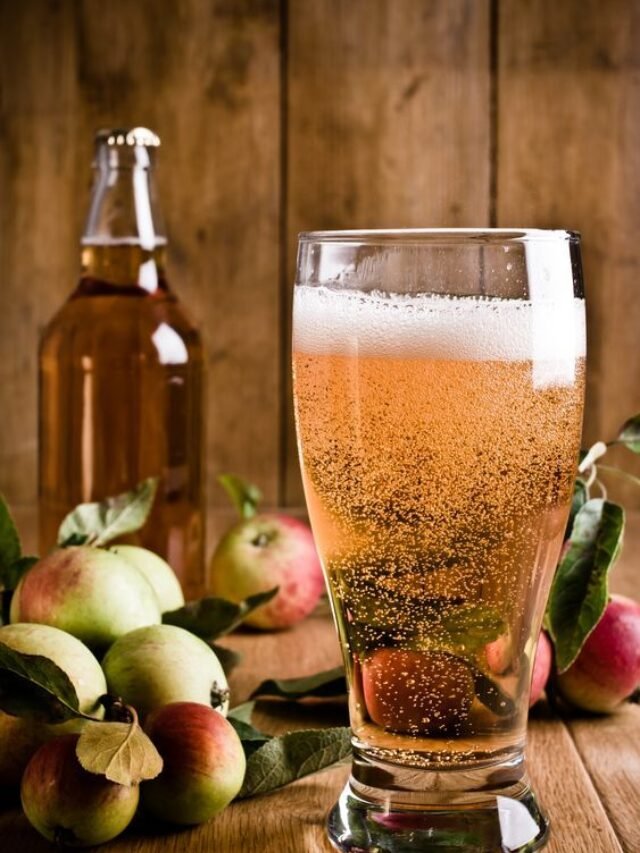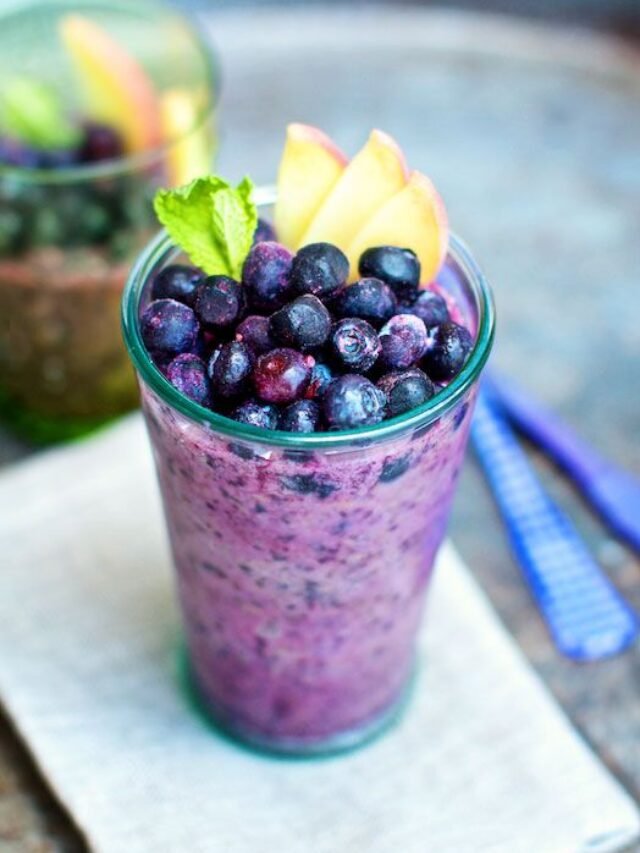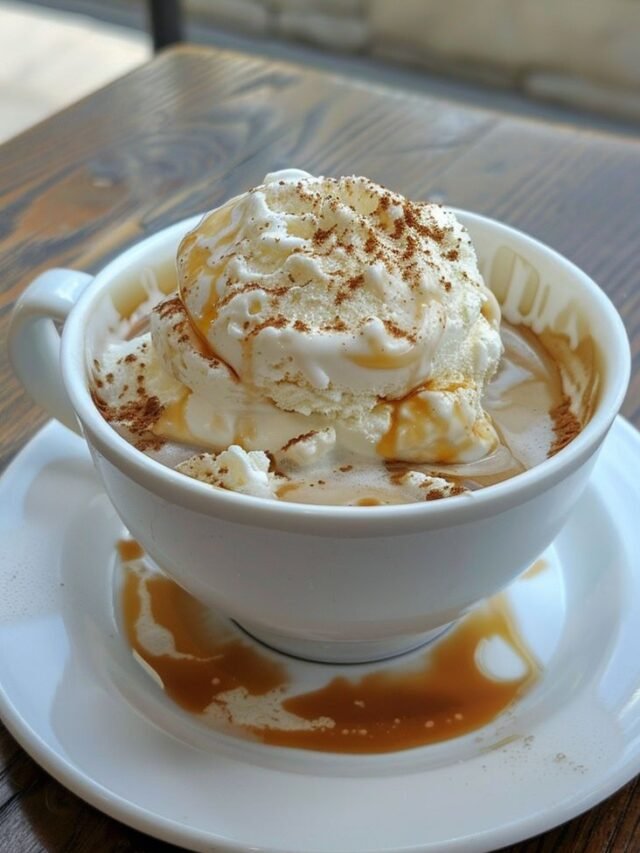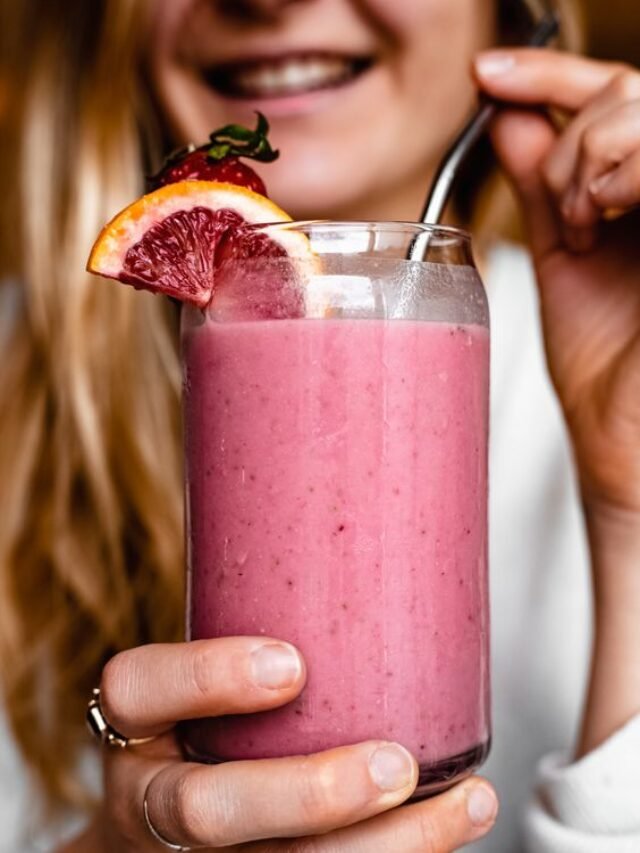Roast beef is a classic dish that can elevate any meal, whether it’s a casual family dinner or a special celebration. To achieve How to cook the best roast beef in the oven, it’s essential to choose the right cut, season it properly, and use the correct cooking techniques. In this guide, we’ll explore the key steps to prepare a succulent roast beef, including selecting the perfect cut, seasoning with herbs and spices, and roasting at the optimal temperature. Whether you prefer it rare, medium, or well-done, this guide will help you create a roast beef that’s juicy, tender, and bursting with flavor.
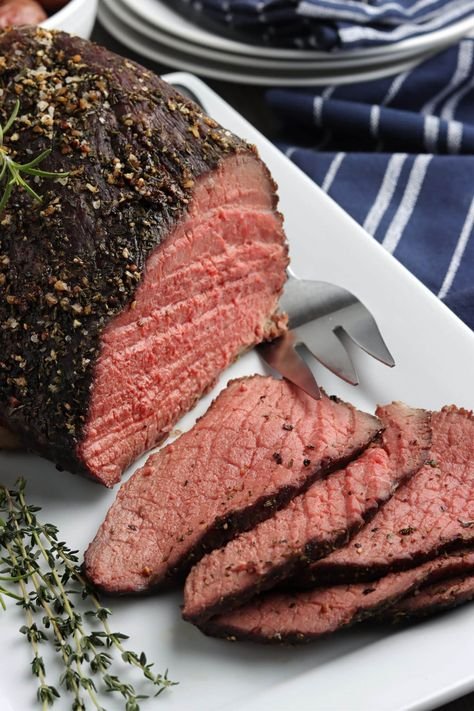
- See More Recipe-
- The Best Ever Vegan Fruit Cake
- How to make Pineapple upside down cake with cake mix
- Banana Bread Recipe with Sour Cream
- TikTok cinnamon rolls with heavy cream and brown sugar
How do I cook a beef roast without drying it out?
To cook a beef roast without drying it out, follow these tips:
- Choose a Marbled Cut: Opt for cuts with good fat content, like ribeye or chuck roast, for extra moisture.
- Season and Sear: Season generously with salt and pepper, then sear the roast in a hot pan before roasting to lock in juices.
- Use a Meat Thermometer: Ensure accurate cooking times by monitoring the internal temperature, aiming for 130-135°F (54-57°C) for medium-rare.
- Cook at Low Temperature: After searing, roast at 325°F (163°C) for even cooking.
- Rest Before Slicing: Allow the roast to rest for 15-20 minutes under foil to retain juices.
What temperature should roast beef be cooked at in the oven?
Roast beef is typically cooked at two temperatures: an initial high heat to sear the exterior, followed by a lower heat to ensure even cooking.
To start, preheat your oven to 450°F (232°C).
Sear the roast for about 10-15 minutes at this high temperature, which helps to develop a flavorful crust.
After searing, reduce the oven temperature to 325°F (163°C).
Continue cooking at this lower temperature until the roast reaches your desired internal temperature, as measured with a meat thermometer.
The exact cooking time will depend on the roast’s size and desired doneness.
What is the most tender beef roast to cook in the oven?
The most tender beef roast to cook in the oven is the tenderloin roast, also known as the filet mignon roast or beef tenderloin.
This cut is prized for its exceptional tenderness due to its minimal connective tissue and marbling.
It’s leaner than other roasts but has a buttery texture that is unparalleled.
The tenderloin roast cooks quickly and should be monitored carefully to avoid overcooking.
It is best enjoyed medium-rare to maintain its tender quality.
While tenderloin is typically more expensive, its melt-in-your-mouth texture makes it a favorite for special occasions and gourmet meals.
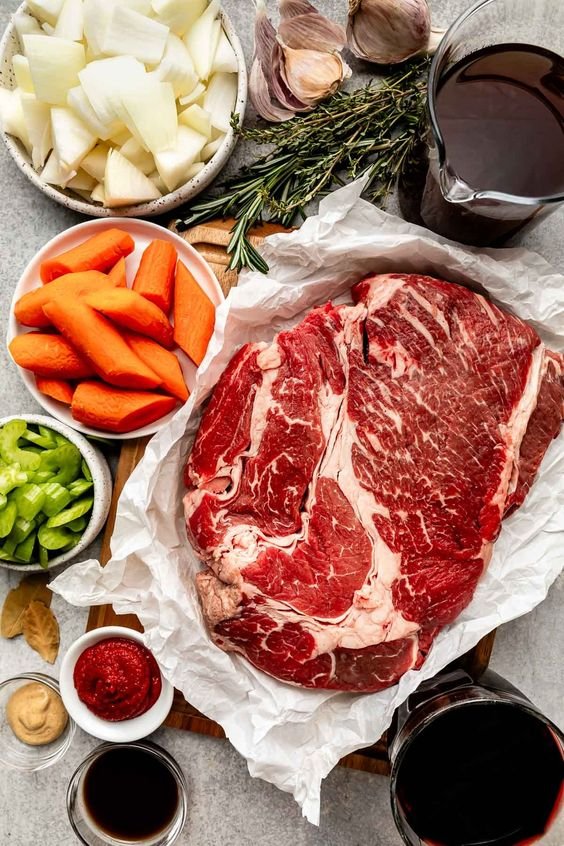
Ingredients
- Roast Beef Cut
- Ribeye Roast: Known for its rich marbling, this cut offers juicy and tender meat.
- Top Sirloin Roast: A leaner option with a robust beef flavor.
- Tenderloin Roast: Exceptionally tender but with less fat, providing a milder taste.
- Rump Roast: Economical and flavorful, but can be a bit tougher.
- Top Round Roast: Lean, versatile, and excellent for roast beef.
- Seasoning
- Olive Oil: Provides a base for the seasonings to adhere to the roast and aids in creating a crust.
- Kosher Salt: A coarser salt that evenly seasons the roast.
- Freshly Ground Black Pepper: Adds a sharp, slightly spicy flavor to the meat.
- Fresh Herbs (Rosemary, Thyme, Oregano): Enhance the aroma and taste; you can use a combination or your preferred herb.
- Garlic Cloves: Optional, but inserting garlic slivers into the roast can add depth of flavor.
- Vegetables (Optional)
- Onions: Can be placed around the roast for added flavor in the pan drippings.
- Carrots: Complementary vegetable for roasting, providing a slight sweetness.
- Additional Ingredients for Gravy or Au Jus (Optional)
- Beef Broth or Stock: Used for deglazing the roasting pan to create gravy or au jus.
- Red Wine: An optional addition to enhance the depth of flavor in the gravy or au jus.
- Butter: Can be used to enrich the gravy for a silky texture.
- Flour: For thickening the gravy, if desired.
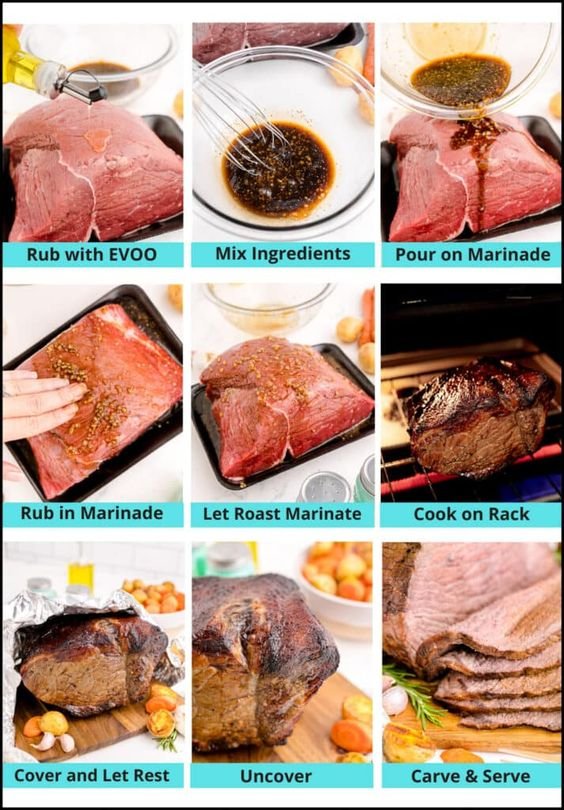
How to Cook the Best Roast Beef in the Oven: Step-by-Step Instructions
Step 1: Choose the Right Cut of Beef
The cut of beef plays a significant role in the outcome of your roast. Popular cuts for roast beef include ribeye, top sirloin, tenderloin, rump, and top round. Consider your budget and desired tenderness when selecting your cut. For a rich flavor with good marbling, ribeye is ideal. If you prefer leaner meat, opt for top sirloin or tenderloin.
Step 2: Prepare the Roast
- Bring to Room Temperature: Remove the roast from the refrigerator 1-2 hours before cooking. This helps it cook evenly.
- Dry the Roast: Pat the roast dry with paper towels to ensure a good sear.
- Season the Roast: Rub a thin layer of olive oil over the roast, then generously sprinkle kosher salt and freshly ground black pepper. For added flavor, you can also rub in fresh or dried herbs like rosemary and thyme. If desired, insert garlic slivers into small cuts in the roast.
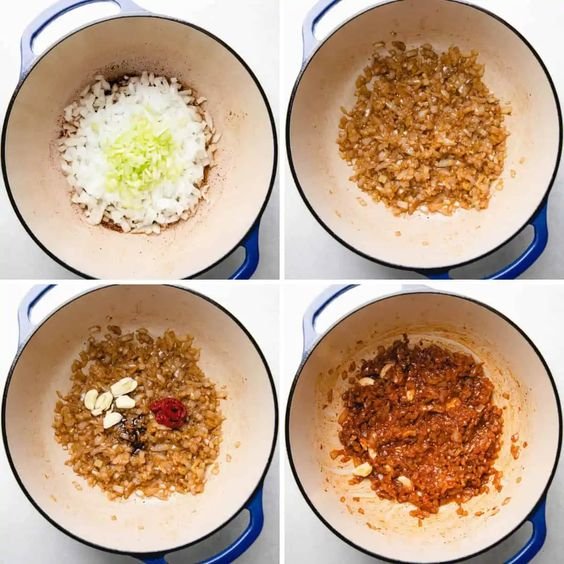
Step 3: Preheat the Oven
Preheat your oven to 450°F (232°C). This high temperature is crucial for searing the roast, creating a flavorful crust.
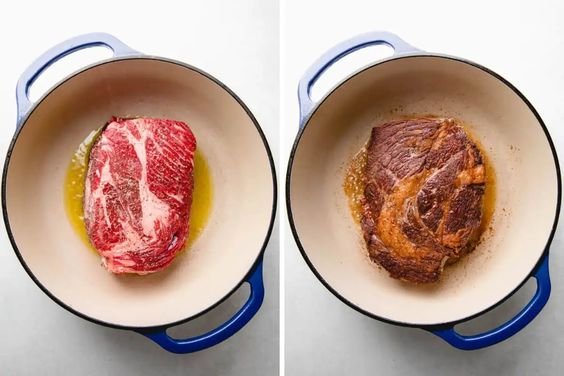
Step 4: Sear the Roast
- Searing in the Oven: Place the roast in a roasting pan or a large cast-iron skillet. Make sure the pan is large enough to allow heat circulation. Place it in the preheated oven and cook for 10-15 minutes to sear the outer layer.
- Alternative Searing Method: You can also sear the roast on the stovetop using a hot skillet before placing it in the oven.
Step 5: Lower the Temperature and Continue Cooking
- Lower the Oven Temperature: After searing, reduce the oven temperature to 325°F (163°C) for the remainder of the cooking time.
- Use a Meat Thermometer: Insert a meat thermometer into the thickest part of the roast, avoiding bones or fat. This is the most accurate way to ensure the roast reaches your desired doneness.
- Rare: 120-125°F (49-52°C)
- Medium-Rare: 130-135°F (54-57°C)
- Medium: 140-145°F (60-63°C)
- Medium-Well: 150-155°F (65-68°C)
- Well-Done: 160-165°F (71-74°C)
- Estimate Cooking Time: As a general rule, plan for 15-20 minutes per pound of roast, but rely on your meat thermometer for accuracy.
Step 6: Rest the Roast
- Remove and Rest: Once the roast reaches the desired temperature, remove it from the oven and tent it with aluminum foil. Allow it to rest for 15-20 minutes. Resting is crucial as it allows the juices to redistribute, ensuring a juicy and tender roast.
Step 7: Slice and Serve
- Slice Against the Grain: When cutting the roast, slice against the grain to ensure tenderness.
- Serve with Sides: Classic sides for roast beef include mashed potatoes, roasted vegetables, or Yorkshire pudding. For added flavor, use the pan drippings to make a gravy or au jus.
Serving the Roast Beef
While the roast is resting, you can prepare a simple gravy or au jus with the drippings from the pan. Deglaze the roasting pan with beef broth or red wine, then simmer to reduce and concentrate the flavors. Add any additional seasonings or herbs as desired.
Once rested, slice the roast beef against the grain into thin slices. Serve with your choice of sides, such as roasted vegetables, mashed potatoes, or Yorkshire pudding.
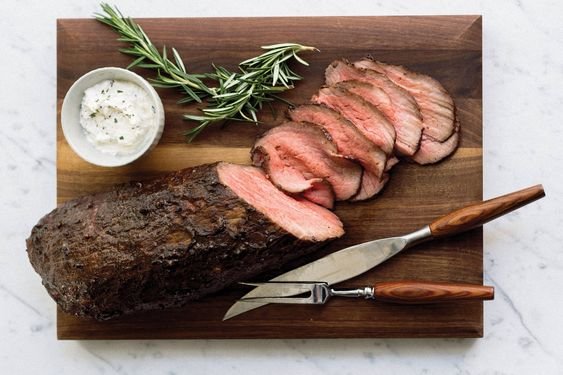
How to cook the best roast beef in oven
Ingredients
- 3-5 pound roast (ribeye or top sirloin recommended)
- Olive oil or another high-smoke-point oil
- Kosher salt
- Freshly ground black salt
- Fresh or dried herbs (rosemary, thyme, or oregano)
- Garlic cloves (optional)
- Onions and carrots (for roasting and added flavor)
Instructions
Preparation and Seasoning
Take Out and Dry:
- Remove the roast from the refrigerator at least an hour before cooking to let it come to room temperature. Pat it dry with paper towels to ensure a good sear.
Season the Roast:
- Rub the roast with a light layer of olive oil, then generously season with kosher salt and freshly ground black pepper. If desired, add a rub of fresh or dried herbs like rosemary, thyme, or oregano. Some like to insert garlic slivers into the roast by making small incisions with a knife.
Preheat the Oven:
- Preheat your oven to 450°F (232°C). The initial high temperature will help sear the outside of the roast for a flavorful crust.
Roasting the Beef
Searing for Crust:
- Place the roast in a roasting pan or large cast-iron skillet. Place the pan in the preheated oven and let it cook for 10-15 minutes. This sears the outside, giving you a nice crust.
Lower the Temperature:
- After searing, reduce the oven temperature to 325°F (163°C) for the remainder of the cooking time.
Use a Meat Thermometer:
- To ensure the roast is cooked to your desired level, use a meat thermometer. Insert it into the thickest part of the roast, avoiding bones or fat. Here are some common internal temperature guidelines for roast beef:Rare: 120-125°F (49-52°C)Medium-rare: 130-135°F (54-57°C)Medium: 140-145°F (60-63°C)Medium-well: 150-155°F (65-68°C)Well-done: 160-165°F (71-74°C)
Estimate Cooking Time:
- As a general rule, estimate about 15-20 minutes per pound of roast. However, always rely on your meat thermometer for accuracy.
Resting Period:
- Once the roast reaches your desired internal temperature, remove it from the oven and tent it with aluminum foil. Let it rest for at least 15-20 minutes to allow the juices to redistribute. This step is crucial for a juicy, tender roast.
Video
These are the key ingredients you’ll need to cook a flavorful and perfectly roasted beef in the oven. Adjust the herbs and seasonings to suit your taste preferences, and feel free to experiment with different vegetables or additional flavorings to customize your roast beef experience.

